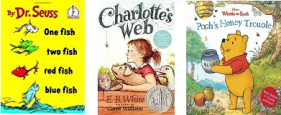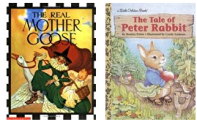Click Here to see my interview with Terry and Carol
Welcome Terry and Carol. I’m honored to be able to interview the duo that created this delightful book.
Terry: Nature. Most of my books have some aspect of nature in them. I’ve always been drawn to the natural world. Whether it’s the mountains, the beach, the desert or simply observing a beautiful garden, nature fascinates me. As a child, I could sit in a tree for hours! As an adult, I don’t climb trees anymore but still find myself in nature for long periods of time. It’s calming, peaceful and inspiring.
Carol: Nature, the endless wonder and beauty of it all, inspires me every day. I take great pleasure in the study and research of creatures and plants. They reveal patterns, designs, colors, texture and uniqueness. There is so much to learn and interpret through my art.
 Terry: I started writing for children in 1999. For ten years, I attended SCBWI events and read books to develop my writing skills. Then in 2009, I began the Vermont College of Fine Arts MFA program, which deepened my craft knowledge tenfold. It’s an amazing program I highly recommend.
Terry: I started writing for children in 1999. For ten years, I attended SCBWI events and read books to develop my writing skills. Then in 2009, I began the Vermont College of Fine Arts MFA program, which deepened my craft knowledge tenfold. It’s an amazing program I highly recommend.
Carol: I like to say I’ve been practicing my craft all my life. My mother says that at the age of a year and a half I drew a picture of Mickey Mouse and it looked like Mickey. I started illustrating children’s books in 1989 with a local publisher in Maryland where I lived at the time. Two years later I had an agent and a Hyperion Press trade book, Sea Squares, by Joy Hulme. Now sixty books later, I am still energized with each new project. They are all so different and, fortunately, there are tools I’ve learned throughout my career that help me to navigate the challenges associated with illustrating a picture book.
Terry: I always write my first draft of a picture book with pencil and notepad. I love the feel of writing by hand as the words flow from my brain through my arm to my hand, then finally onto the paper. Doing it this way also slows the process, allowing me to be more mindful of my writing. After the first (very messy) draft, I type the story onto my computer and revise on printed drafts.
 Carol: I work primarily in gouache, an opaque watercolor paint. The opaque or transparent quality, depending on how thick the paint is mixed, make this medium versatile. Gouache is quick drying, which means no waiting time. That comes in handy when working under a deadline, which is most of the time. I also work in Photoshop. It has become indispensable in creating final art for books. I make a high resolution scan of my traditional work and continue to paint in Photoshop. Many details I used to hand render are now finished in Photoshop. In past years I depended on an airbrush for adding large smooth backgrounds or creating smooth textures. Now I use Photoshop to do the same thing.
Carol: I work primarily in gouache, an opaque watercolor paint. The opaque or transparent quality, depending on how thick the paint is mixed, make this medium versatile. Gouache is quick drying, which means no waiting time. That comes in handy when working under a deadline, which is most of the time. I also work in Photoshop. It has become indispensable in creating final art for books. I make a high resolution scan of my traditional work and continue to paint in Photoshop. Many details I used to hand render are now finished in Photoshop. In past years I depended on an airbrush for adding large smooth backgrounds or creating smooth textures. Now I use Photoshop to do the same thing.
Terry: I casually mentioned to a friend that I wanted to try writing children’s books. She told me about the SCBWI so I joined. They’re a fantastic organization for anyone who wants to learn to write for kids. They’re what got me started and pushed me in the right direction. If it weren’t for my local SCBWI chapter, I wouldn’t have had my early publication successes.
Carol: I graduated from the Kansas City Art Institute, spending my senior year at Rhode Island School of Design in a mobility program. This gave me a good foundation to be an illustrator. When I decided to concentrate on illustrating picture books, I began attending every conference and workshop I could find. At a seminar in Maryland I signed up to have my portfolio critiqued by an artist’s representative. In time she became my agent and I began illustrating a long line of trade books for publishers such as Hyperion, Scholastic, Grosset & Dunlap and Sterling.
Terry: This is the toughest question! There’s so much good advice to give but what rings true to them all is to be persistent. Keep at it even when the going gets extraordinarily tough (and it will!). No matter what phase of writing you’re in, whether you’re developing your craft, submitting your work, or marketing your work, don’t give up! Identify your mistakes, learn from them and keep going. If you learn and persist, you’ll find success.
Carol: Believe in what you are doing. Become a mini expert in whatever the subject matter is you are illustrating or writing about. Find a way to get really excited about the subject. For me, its research that gives me inspiration and lets me know how to illustrate my subject.
Terry: When I was a Montessori teacher, we had a school garden and I greatly enjoyed gardening with the children. There’s something about putting your hands in the soil, being close the earth, caring for the seedlings and watching them grow to maturity that’s amazing for kids. But that’s not what this book is really about…it’s about what happens in a garden! So why did I write it?
I had decided I wanted to write a cumulative story (where the text builds on itself). I recalled that my Montessori students LOVED Arnold Lobel’s cumulative book, THE ROSE IN MY GARDEN. I looked at that story as a mentor text. Of course, my story had to be different (his showcased flowers), so I pondered how I might keep the same setting, but change the focus, plot and characters. I knew most kids love bugs so I decided to focus on bugs and other animals that inhabit a garden. Then when I got the idea to include the surprise element of the developing chrysalis I was ready to write (which meant a lot of playing with words—my favorite part of writing!).
Carol: I am a long time gardener and much of what I know I learned by illustrating gardening articles for the Home section of The Washington Post newspaper. Much of my gardening has been in the Mid-Atlantic region but I’ve also tended gardens in the South and Midwest. Working to make plants grow and being rewarded with flowers makes me smile. What could be better that illustrating that happy feeling of growing all those beautiful flowers with my paints.
Terry: When I was a kid, I loved “wooly bears.” 
I mean, what kid could resist picking one up one of these cute little fuzzy guys? It wasn’t until I was an adult that I found out they turn into tiger moths!

I mean, what kid could resist picking one up one of these cute little fuzzy guys? It wasn’t until I was an adult that I found out they turn into tiger moths!
As an adult, I think one of the coolest insects is the praying mantis (which also happens to be one of my favorite illustrations in the book!). Praying mantises are the rule-breakers of insects. They’re the only one that can turn their head 180 degrees (imagine the advantage that gives them), and after mating the female bites off the male’s head! And the way they hold their front legs ready to strike their prey, yeah, mantises are pretty cool.
Carol: I love how dragonflies and praying mantises look like big, alien creatures. Beetles are interesting because they come in an amazing variety of shapes sizes, colors and patterns. Who doesn’t like butterflies and moths for their many colors and patterns? I respect ants for their eusocial society but I hate coming in contact with them, especially fire ants.
 Terry: I loved any of Dr. Seuss’s books. CHARLOTTE’S WEB by E. B. White was another favorite, along with GENTLE BEN by Walt Morey and RASCAL by Sterling North. Even as a child, books with nature and/or animals appealed to me. Oh, and PIPPI LONGSTOCKING by Astrid Lindgren was a girl after my own heart. Being a tomboy, I saw myself in Pippi. I probably read that book perched in a tree!
Terry: I loved any of Dr. Seuss’s books. CHARLOTTE’S WEB by E. B. White was another favorite, along with GENTLE BEN by Walt Morey and RASCAL by Sterling North. Even as a child, books with nature and/or animals appealed to me. Oh, and PIPPI LONGSTOCKING by Astrid Lindgren was a girl after my own heart. Being a tomboy, I saw myself in Pippi. I probably read that book perched in a tree! Carol: I remember favorite childhood books as old friends, there was Charlotte’s Web, Alice in Wonderland, Huckleberry Finn, The Tale of Peter Rabbit, Winnie the Pooh and Marguerite de Angeli’s Book of Nursery and Mother Goose Rhymes. I had a bookcase full of Little Golden Books and two large volumes of nature books, Children’s Guide to Knowledge. That’s where I learned of extraordinary creatures such as giant clams, flying squirrels and a strange bird with an extra long tail called a quetzal. Those books fascinated me and, I believe, were the start of my love of nonfiction.
Carol: I remember favorite childhood books as old friends, there was Charlotte’s Web, Alice in Wonderland, Huckleberry Finn, The Tale of Peter Rabbit, Winnie the Pooh and Marguerite de Angeli’s Book of Nursery and Mother Goose Rhymes. I had a bookcase full of Little Golden Books and two large volumes of nature books, Children’s Guide to Knowledge. That’s where I learned of extraordinary creatures such as giant clams, flying squirrels and a strange bird with an extra long tail called a quetzal. Those books fascinated me and, I believe, were the start of my love of nonfiction.
If you’d like to know more about Terri and Carol, please visit their websites:
Bug jar:
Make a footprint grasshopper:
Make a colourful paper chain caterpillar with wobbly eyes and antennae:

No comments:
Post a Comment